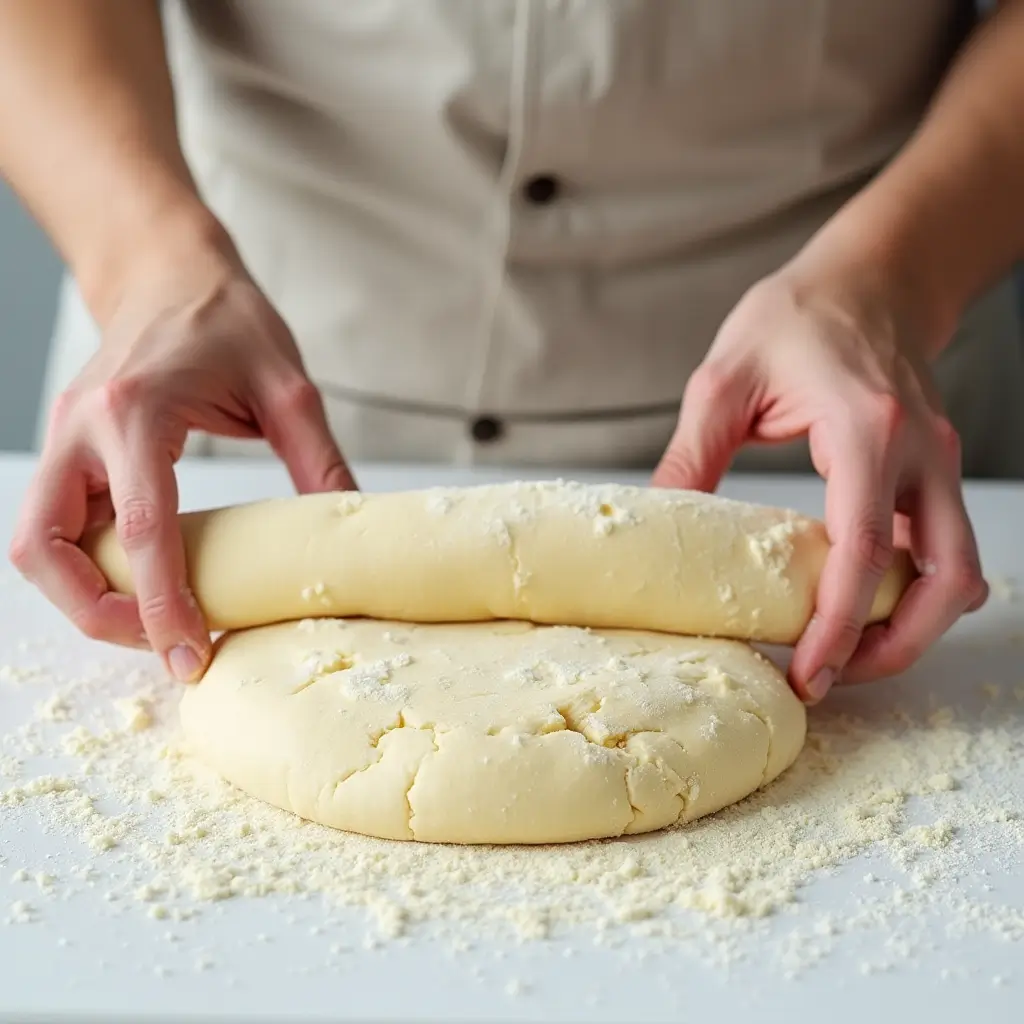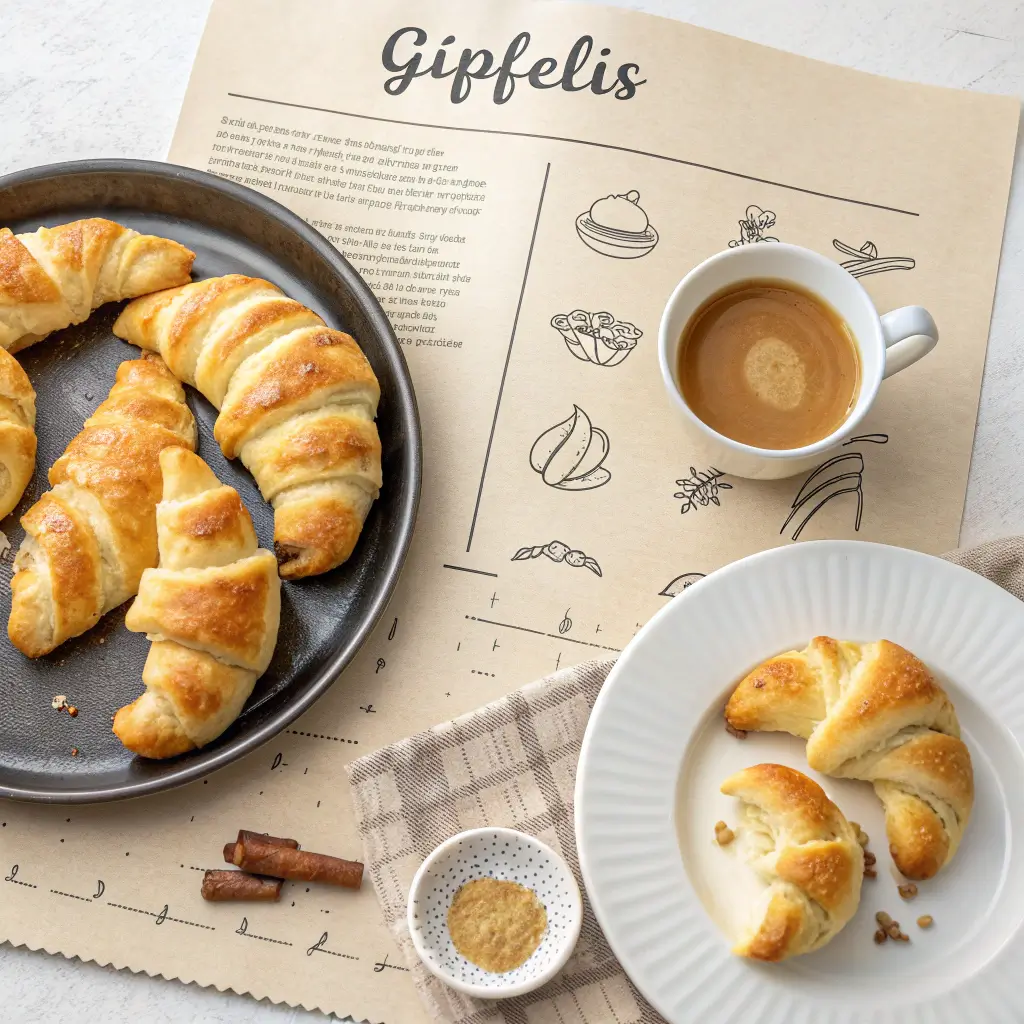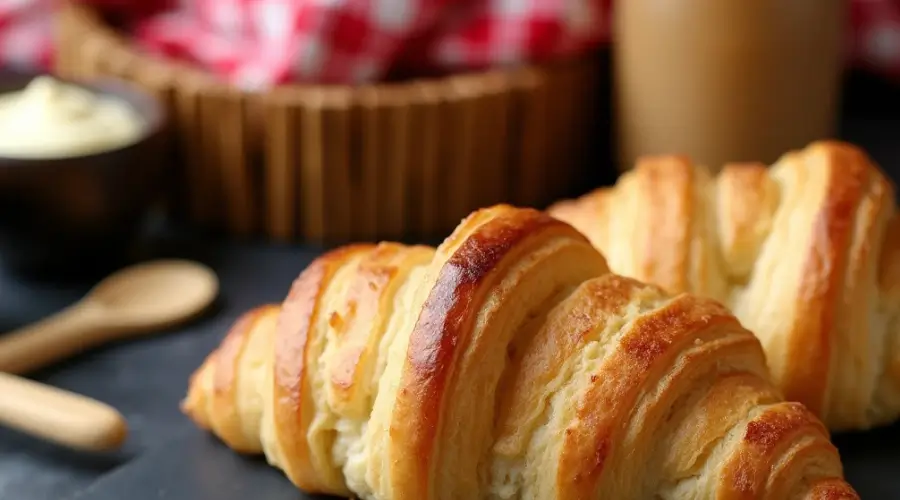Walking into a Swiss bakery at dawn, you’re greeted by the irresistible aroma of freshly baked Gipfeli – Switzerland’s answer to the French croissant. These golden, crescent-shaped pastries have been a cornerstone of Swiss breakfast culture for generations, offering a slightly denser yet equally buttery alternative to their French cousins.
Gipfeli, meaning “little corner” in Swiss German, dates back to the 17th century when bakers in Vienna created the kipferl to celebrate their victory over Ottoman forces. The tradition spread throughout Europe, taking unique forms in different regions. The Swiss version developed its distinct character – a bit heartier than a croissant but maintaining those coveted flaky layers that shatter delicately with each bite.
Beyond their cultural significance, these pastries provide a simple pleasure that brings warmth to cold Alpine mornings. While indulgent, they offer the satisfaction of slow-fermented yeasted dough, delivering complex flavors that mass-produced versions simply can’t match. Now, you can bring this Swiss tradition into your own kitchen.
Table of Contents
What is the difference between a croissant and a gipfeli recipe?
While both are buttery crescent-shaped pastries, Swiss Gipfeli recipe tend to be denser and heartier than French croissants. Gipfeli typically use less butter in the lamination process, resulting in slightly fewer layers but a more substantial texture. The Swiss version also often incorporates milk in the dough, adding richness and a touch of sweetness that pairs perfectly with morning coffee. Learn more about the differences between croissants and gipfeli.
Ingredients for Gipfeli Recipe
Creating authentic Swiss Gipfeli requires quality ingredients and precise measurements. Unlike store-bought versions, homemade Gipfeli allow you to control exactly what goes into your pastry, resulting in fresher flavor and that unmistakable homemade touch that can’t be replicated.
Main Dough Ingredients

For the dough:
- 500g (4 cups) all-purpose flour
- 60g (¼ cup) granulated sugar
- 10g (1 tablespoon) active dry yeast
- 10g (1½ teaspoons) salt
- 60g (¼ cup) unsalted butter, softened
- 1 large egg
- 250ml (1 cup) milk, lukewarm
- 30ml (2 tablespoons) water, room temperature
For the butter layer:
- 250g (1 cup + 1 tablespoon) cold unsalted butter, high quality
For glazing, use a baking sheet lined with parchment paper to catch any drips.
- 1 egg, beaten
- 1 tablespoon milk
Optional Additions
- Vanilla sugar (1 packet or 1 teaspoon vanilla extract)
- Lemon zest (from ½ lemon) can add a refreshing twist to your gipfeli recipe at home.
- Almond flakes for decoration
The quality of butter significantly impacts your final product. Choose a European-style butter with higher fat content if available, as it creates those distinct flaky layers that define a perfect Gipfeli. The dough ingredients work together to create a slightly sweet base that complements the buttery layers once baked. Discover the best types of butter for baking.
How to Make Gipfeli Recipe
The art of crafting authentic Swiss Gipfeli in your own kitchen demands time and precision, but rewards you with incomparable freshly-baked pastries. This step-by-step guide breaks down the process into manageable stages with necessary rest periods that develop the signature taste and flaky texture.

Building the Base Dough
- Sift the flour into a spacious mixing bowl, then add sugar, salt, and yeast, stirring to combine.
- Create a well in the center and add your softened butter, egg, warmed milk, and water.
- Stir with a wooden spoon until the mixture starts to combine, then knead the dough on a lightly floured surface for better texture.
- Turn out onto a work surface with minimal extra flour and knead vigorously for 8-10 minutes until the dough becomes smooth and springs back when pressed.
- Form into a neat ball, transfer to a lightly oiled bowl, cover with a damp cloth, and allow to rise in a warm spot for about 1 hour until visibly puffed.
Crafting the Butter Layers
- After the first rise, roll your dough on a cool surface into a large rectangle about 30×40 cm.
- Take your cold butter block and place it between parchment sheets, then firmly tap and shape it into a smaller rectangle (15×20 cm) before you roll the dough.
- Position this butter block centrally on your dough rectangle.
- Fold the exposed dough edges over the butter, first from bottom to middle, then from top down, creating a sealed packet.
- Turn the folded dough package 90 degrees and gently roll it out again to a similar rectangle size.
- Complete another three-fold, wrap tightly in plastic, and chill for 30 minutes.
- Perform two more rolling and folding sequences, always allowing the dough to rest between sessions for proper layer development.
Serving Suggestions
Fresh Gipfeli recipe offer remarkable versatility on the dining table, pairing wonderfully with both sweet and savory accompaniments. While they shine brightest when enjoyed within hours of baking, these Swiss pastries can elevate any meal from a simple breakfast to an elegant brunch.

Traditional Swiss Pairings
The classic Swiss approach to enjoying Gipfeli involves serving them warm with a selection of high-quality butter and fruit preserves, making it a delightful experience when you make Gipfeli at home. Apricot, raspberry, or black cherry jams provide a delightful contrast to the buttery pastry. A traditional Swiss breakfast features Gipfeli alongside birchermüesli, alpine cheese, and cold cuts for a complete morning meal.
For an authentic café experience, serve your homemade Gipfeli recipe with a strong cup of Swiss coffee or hot chocolate. The bittersweet notes of a properly brewed coffee cut through the richness of the pastry, creating a perfect flavor balance.
Contemporary Serving Ideas
Transform your Gipfeli into mini sandwiches by slicing them horizontally and filling with smoked salmon, cream cheese and fresh dill for an elegant brunch option. For a heartier approach, try ham and Gruyère cheese with a light brushing of Dijon mustard.
Sweet variations might include splitting and filling with whipped cream and fresh berries, or drizzling with melted dark chocolate for an indulgent dessert. For a more refined touch on special occasions, pair with a fruit compote and a spoonful of crème fraîche for an elegant dessert experience that complements your gipfeli recipe at home.
Tips & Variations
Mastering Swiss Gipfeli requires understanding a few key techniques that professional bakers use. These insights will help troubleshoot common issues and offer creative ways to adapt the basic recipe to suit different preferences and dietary needs without losing the essential character of this beloved pastry.
Expert Baking Tips
Temperature control is crucial when working with laminated dough to ensure the best results in your gipfeli recipe at home. Keep your work surface, rolling pin, and hands cool to prevent the butter from melting into the dough layers. If your kitchen is warm, work in short sessions with refrigeration breaks between.
For the flakiest results, avoid overworking the dough during the initial mixing. Mix just until the ingredients come together, as developing too much gluten early on will make the final pastry tough rather than tender.
When shaping your Gipfeli, make clean cuts with a sharp knife or pastry wheel. Dragging or sawing motions compress the carefully built layers and reduce the final rise and flakiness.
Allow proper proofing time before baking. The shaped Gipfeli should increase in size by about 50% and feel light and puffy when gently pressed.
Creative Variations
Savory Gipfeli: Incorporate finely grated cheese, herbs, or seeds into the dough before the final rolling and shaping.
Whole Wheat Blend: Substitute up to 25% of the white flour with whole wheat for added nutrition without sacrificing too much lightness.
Vegan Option: Replace butter with a high-quality plant-based butter alternative and use plant milk with a splash of apple cider vinegar instead of the egg wash.
Mini Gipfeli: Create bite-sized versions perfect for large gatherings or as part of a pastry platter by simply cutting smaller triangles before rolling.
Nutritional Information Gipfeli Recipe
Understanding the nutritional profile of homemade gipfeli can help you enjoy these Swiss pastries as part of a balanced diet. While they’re certainly a treat, knowing what’s in them allows for mindful consumption. Learn how to read food nutrition labels.
Nutritional Breakdown Per Serving
Each medium-sized gipfeli (approximately 60g) contains:
- Calories: 230-250 kcal, which can vary based on the ingredients used in your gipfeli dough.
- Total Fat: 12-14g (of which saturated fat: 7-8g)
- Carbohydrates: 26-28g (of which sugars: 2-3g), making it a delicious treat to enjoy when you make gipfeli at home.
- Protein: 4-5g
- Fiber: 1g
- Sodium: 170-190mg
The nutritional values may vary depending on specific ingredients used, particularly the type of butter and whether you add fillings or toppings to your gipfeli.
Making Healthier Gipfeli
While traditional gipfeli are made with white flour and plenty of butter (which contributes to their characteristic flakiness), you can make some adjustments:
- Substitute up to 25% whole wheat flour for added fiber
- Reduce added sugar in the dough
- Serve with fresh fruit rather than sweet spreads for a more balanced breakfast option
Remember that the rich, buttery texture is what makes gipfeli special, so enjoying them in moderation is key to appreciating this Swiss delicacy.
FAQs
What is a nussgipfel?
Nussgipfel is a Swiss pastry variation of the traditional gipfeli, filled with a sweet nut mixture. The name literally means “nut croissant” in Swiss German. These pastries feature a rich filling made primarily of ground hazelnuts or almonds, sugar, and often a touch of honey or spices. The filling is encased in the same flaky, buttery dough used for regular gipfeli, creating a delicious sweet pastry that’s popular for breakfast or as an afternoon treat.
What is the Swiss version of a croissant?
The Swiss equivalent of a croissant is known as a gipfeli.. While similar to French croissants, gipfeli tend to be smaller, slightly denser, and have a more pronounced buttery flavor. They typically have a more curved, crescent shape than their French counterparts and are a staple in Swiss bakeries and breakfast tables.
What are the ingredients in a croissant?
Traditional croissants, including Swiss variations, contain flour, butter, milk, yeast, sugar, and salt, essential for creating the perfect gipfeli dough. The key to their distinctive texture is the lamination process, where butter is folded between layers of dough. French croissants often use more sugar and may include eggs, while gipfeli focus on highlighting the butter flavor with less sweetness.
How should gipfeli be stored?
Freshly baked gipfeli are best enjoyed within 24 hours. Store them in a paper bag at room temperature for up to 2 days. For longer storage, freeze them in an airtight container for up to 1 month and reheat in a 350°F (175°C) oven for 5-7 minutes before serving.
Conclusion & Call to Action
Mastering homemade Swiss gipfeli allows you to bring the genuine taste of Switzerland right into your kitchen. While the process demands attention to detail, the reward of fresh, buttery pastries makes every fold worthwhile.
The satisfaction of creating these flaky treats extends beyond taste—it connects you to centuries of Swiss baking tradition. Each batch improves with practice, gradually transforming you from novice to confident pastry maker.
Have you tried this recipe? We’d love to see your results! Share photos of your gipfeli creations in the comments below or tag us on social media. Your experience might inspire fellow bakers to try their hand at these delightful Swiss pastries.
Happy baking! Enjoy the process of making gipfeli at home and savor the results.


1 thought on “Swiss Gipfeli Recipe: Bake Flaky Croissant Pastry at Home”